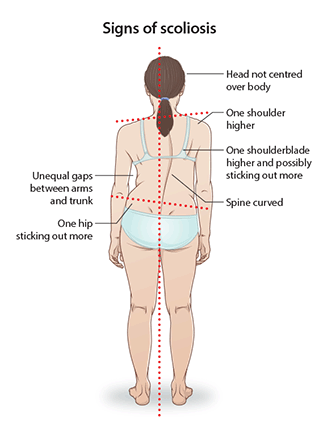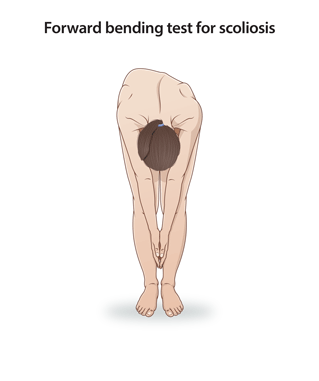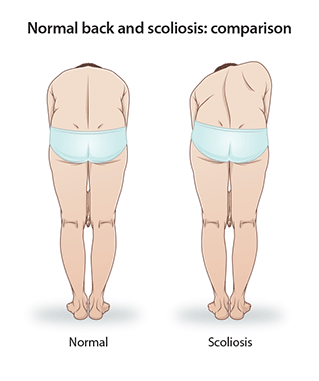About scoliosis
Scoliosis is a sideways curving and turning of the bones of a child’s spine.
Most cases of scoliosis develop in otherwise healthy children and are idiopathic, which means there’s no obvious cause. Idiopathic scoliosis can start at any age during childhood and adolescence, but it most commonly starts during a growth spurt, usually when children are 10-11 years old.
Some children have neuromuscular scoliosis, which is caused by weak muscles or nerves. This type of scoliosis affects children with conditions like cerebral palsy, spina bifida and muscular dystrophy.
Congenital scoliosis is when scoliosis is present at birth and is caused by poorly formed bones in the spine. Sometimes congenital scoliosis might not show up until later in childhood.
Connective tissue disorders like Marfan Syndrome can also cause scoliosis.
Scoliosis tends to run in families, so genetics might play a part in causing it.
Scoliosis affects approximately 2-3% of children and teenagers. It’s more common in girls than boys, particularly in girls aged 10-13 years.
Signs and symptoms of scoliosis
You might see the following in a child with scoliosis:
- unevenness in the shoulders and waistline
- the pelvis shifted to one side
- the head slightly tilted
- unevenness in the shape of the rib cage at the back, when the person bends forward.

Often a child with scoliosis doesn’t experience any symptoms. But common symptoms are a mild ache in the lower or middle back area.
Children grow very quickly so the curve can develop and get worse very quickly.
Does your child need to see a doctor about scoliosis?
If you think your child might have scoliosis, it’s a good idea to see your GP. You might be referred to an orthopaedic surgeon for further tests.
Early detection is very important.
Tests for scoliosis
Doctors might use the forward bending test. This test involves the following steps:
- Stand with feet together and parallel.
- Place palms of hands together with arms straight.
- Bend forward towards feet with fingertips pointing between the big toes.
- The doctor will check the shape of the back. If one side of the back is 1 cm higher than the other side, it might be scoliosis.


To confirm scoliosis, doctors usually order a scoliosis X-ray, or a full spine X-ray with images of a child’s front and sides.
An MRI is sometimes ordered for children when there’s a chance of finding an underlying cause, or for children who need surgery.
Treatment for scoliosis
Treatment depends on how severe the scoliosis is and how mature the child’s bones are.
For children with mild scoliosis who are still growing, doctors usually recommend close monitoring and X-rays every 4-6 months.
For children with moderate scoliosis who are still growing, doctors might recommend a brace.
If your child needs a brace, she’ll wear it under her clothes for 23 hours a day, with one hour off for exercising and showering. A brace won’t correct a curve, but it might help prevent it getting worse as your child grows. Braces significantly decrease the need for surgery.
Surgery is recommended only in severe cases of scoliosis, when doctors think the curve is likely to keep getting worse, even when a child has stopped growing. If a child has pain and poor quality of life because of the scoliosis, doctors might also recommend surgery.
Surgery most commonly involves fixing metal rods to the spine to realign and stabilise the affected areas. If your child has this surgery, he’ll usually stay in hospital for 5-7 days and go back to school 3-4 weeks later.
Children with scoliosis might also get support from an orthotist, a physiotherapist or a psychologist.
Scoliosis prevention
We don’t know what causes idiopathic scoliosis, so health professionals can’t say how to prevent it. Staying active, practising good posture and working on core strength, including abdominal and hip strengthening activities, might help.